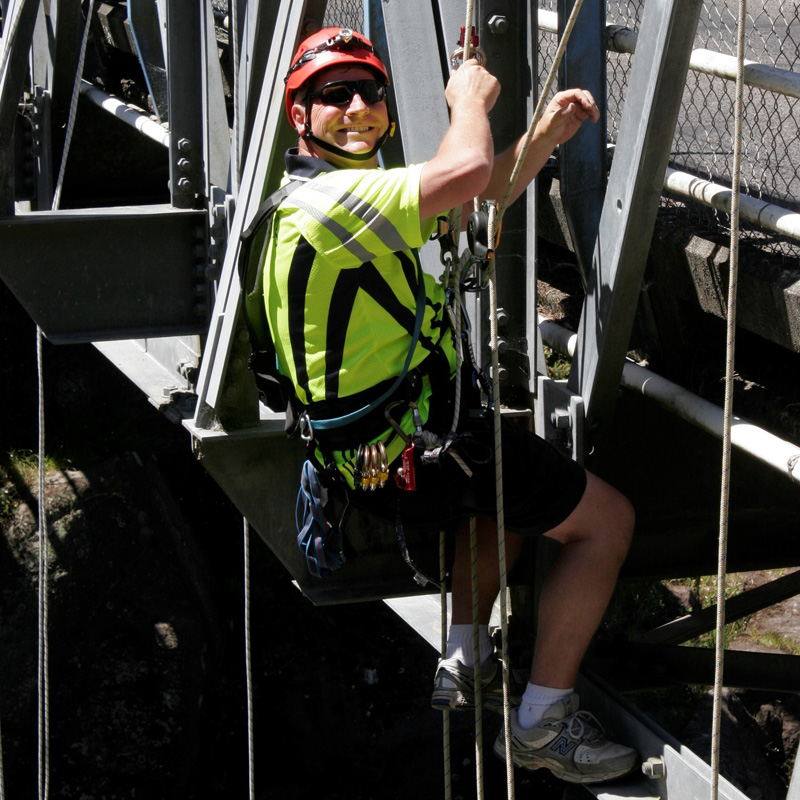
Courses for Working at Heights
Contact UsHEIGHT SAFETY,
FALL ARREST,
HEIGHT RESCUE COURSES
Basic Height Safety Course: $295.00 + GST
Full Height Safety & Fall Arrest Course: $550.00 + GST
COURSE AIM
To share knowledge and improve the awareness of hazards at heights. Additionally, we set up and implement appropriate fall restraint or fall arrest systems to improve work and safety when working at heights.
Full Course Details
Benefits
Duration
Basic Height Safety Course:
Full Height Safety Course:
- 17600: Explain Safe Work Practices for Working at Height (one-day course when conducted by itself).
- 23229: Use a Harness for Personal Fall Protection When Working at Height (a prerequisite for 15757 and 25045).
- 15757: Use, Install, and Disestablish Proprietary Fall Arrest System When Working at Height (full course is $550 + GST, including NZQA credits).
Elective Unit Standard (a small fee may be charged to register these extra credits).
- 25045: Employ Height Safety Equipment in the Workplace (can be run in the place of 15757 in the two-day course).
What is involved?
- The Health & Safety at Work Act 2015, associated regulations and guidelines for Working at Height, and precisely what it means.
- Hazards Associated with Different Height Work (for example, roofers, scaffolders, window cleaners, construction workers, builders, maintenance workers, and inspectors).
- Equipment associated with safely working at heights in various situations.
- Hierarchy of fall arrest and restraint.
- Fall distances versus forces exerted on the body.
- Suspension trauma.
- Isolation of height hazards versus minimisation (signage, policies, and PPE).
Fall Arrest Equipment Use and Maintenance
The practical component of the course covers the following:
- The checking, fitting of, and working in various fall arrest and rope access harnesses.
- Checking standard height safety equipment for serviceability.
- Designing and setting up a suitable fall arrest system for a given situation.
- Working safely on a fall arrest system set up by the trainee.
- Designing and setting up a fall arrest system with a pre-set rescue system.
- Implementation and working on a fall arrest system.
- Conducting a self-rescue and assisted rescues on and from various fall arrest systems.

Prerequisites:
Suspension Trauma
In the lower body, the muscles ‘squeeze’ the veins to push the blood back up. This is the same reason that a soldier will pass out on a parade ground if they forget to wiggle their toes and slowly move up and down on the balls of their feet. The technical term for this is orthostatic intolerance.
The time drawn in the sand for this is ten minutes, although it has been proven that passing out may take 15 to 40 minutes. The detailed time for a rope access worker to rescue a suspended worker is ten minutes. This rule is for working at heights in NZ forms part of AS/NZS4488(1 and 2): 1997 (Industrial Rope Access), and is in the National Certificate in Rope Access
Contact Us
For course bookings or any questions, either give us a
call on 0800 135 483 (0800 1ELITE) or email us below
